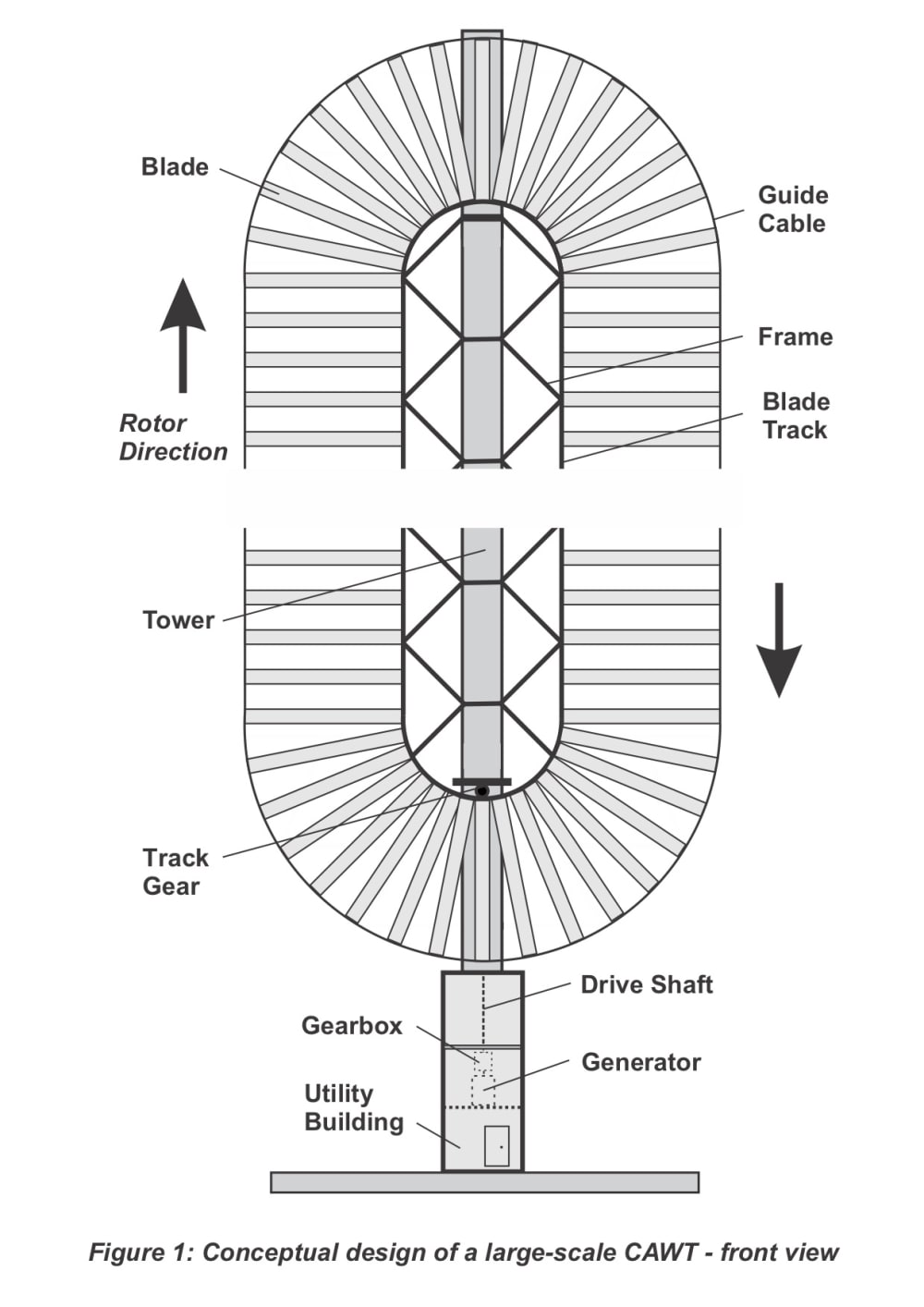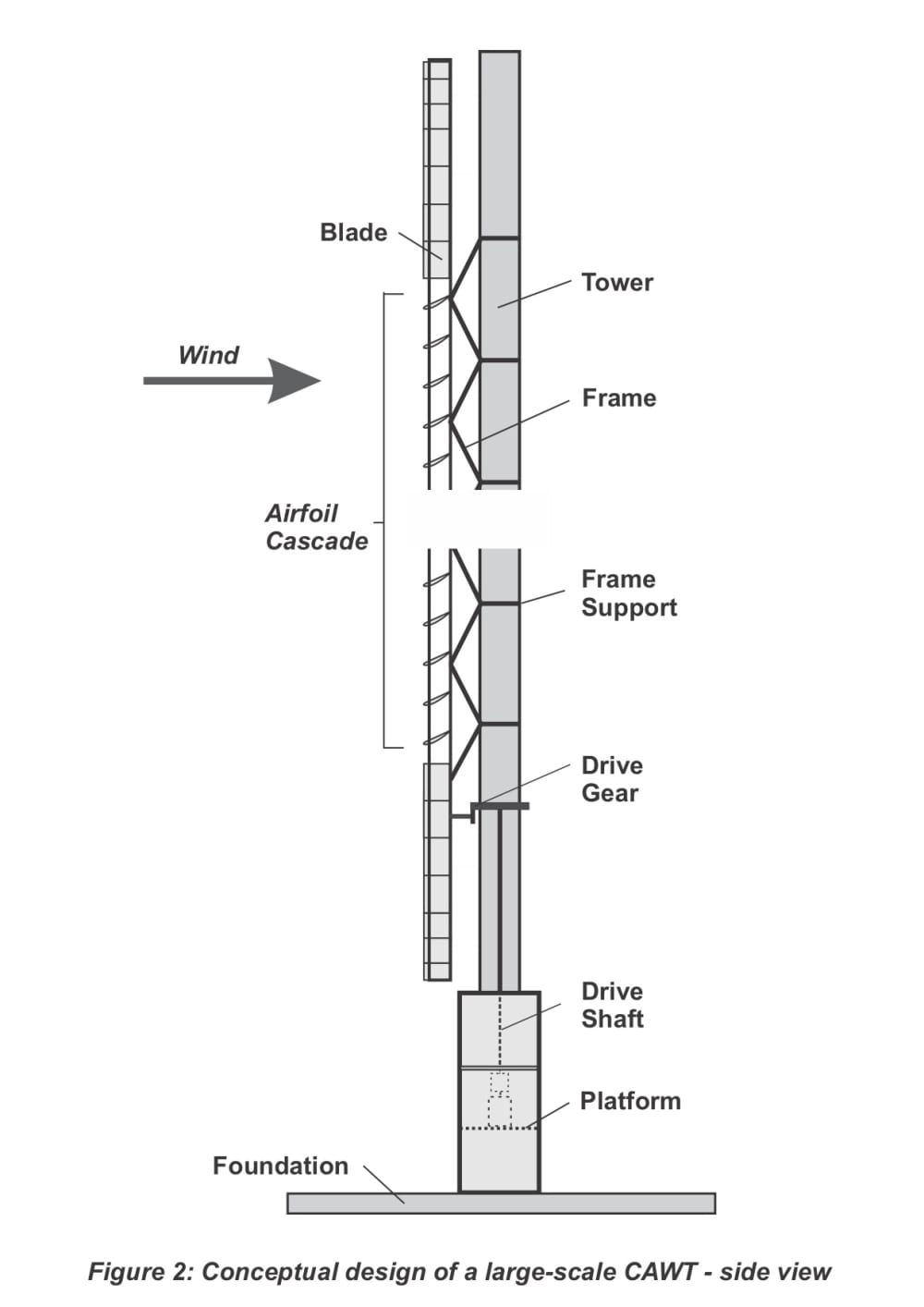
A CAWT (Figures 1 & 2) incorporates an innovative wind turbine rotor with a maximum power coefficient (Cp) of 0.88. This value is based on 3D computational fluid dynamics (CFD) studies confirmed by an independent CFD-simulation services company. This exceptional aerodynamic performance is achieved by using closely-spaced, steeply-pitched blades to form a column of rectangular, convergent nozzles during the vertical motion of the blades. This blade configuration, analogous to the stator of a steam turbine, allows some of the pressure energy of moving air to be converted into additional kinetic energy in accordance with the steady-flow energy equation. The high-velocity air jets created by the multiple nozzles (Figure 3) provide the propulsive force that powers the rotor via Newton’s 3rd law of motion.
Compared to a three-bladed horizontal axis wind turbine (HAWT), a large-scale CAWT
- has a higher maximum power coefficient (i.e. 0.88 vs. 0.50)
- can achieve an even higher power coefficient using blade-optimization CFD analyses
- can operate with high efficiency over a wide range of wind speeds
- has a similar driving force/thrust force ratio (Figure 3)
- does not support a heavy nacelle at the top of the tower
- houses the generator, gear box (or direct drive system) and electronics at the base of the tower
- allows easier mechanical and electrical maintenance near ground, or sea, level
- uses light-weight blades that are supported at both ends
- has slow-moving blades, which travel close to the wind speed for maximum power, that are subject to substantially lower lift and drag forces
- greatly reduces the risk to bird and bat populations, due to the slow-moving blades
- has low noise generation
- can be retrofitted onto existing wind turbine systems.
Manufacturing
- the light-weight blades can be hollow, or foam-core filled, and be made inexpensively via pultrusion, injection molding or other methods
- blade strength requirements and their cost are much lower than for cantilevered blades, since the blades are supported at both ends
- the CAWT tower is less massive and is cheaper to build than a HAWT tower, because it does not support a heavy nacelle.
Construction and maintenance
- lower-cost materials can be used for the utility building and its components versus the higher cost of materials and components required for a HAWT nacelle
- the generator, gear box (or direct-drive system) and electronics are much easier to install and maintain near ground, or sea, level than inside a tower-top nacelle
- rotor blades can be easily inspected, repaired or replaced, since each blade can be accessed near ground level.
Marketability
- US Patent 10,683,841 B2
- The world has over 733 GW of installed WT capacity
- A CAWT can be built for approximately the same cost as a HAWT with the same swept area and tower height, but can generate twice as much power
- HAWT installations can have their three-bladed rotors cost-effectively replaced with higher efficiency CAWT rotors
- CAWT technology can be licensed.
-
Awards
-
 2021 Top 100 Entries
2021 Top 100 Entries
Like this entry?
-
About the Entrant
- Name:Harvard Farrant
- Type of entry:individual
- Software used for this entry:CorelDRAW, SolidWorks & ANSYS Fluent
- Patent status:patented








